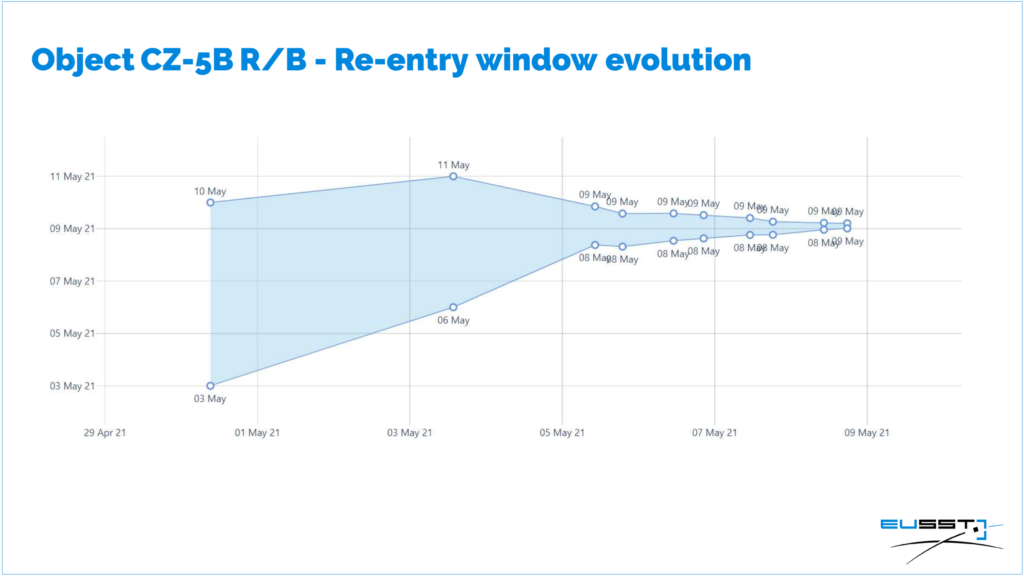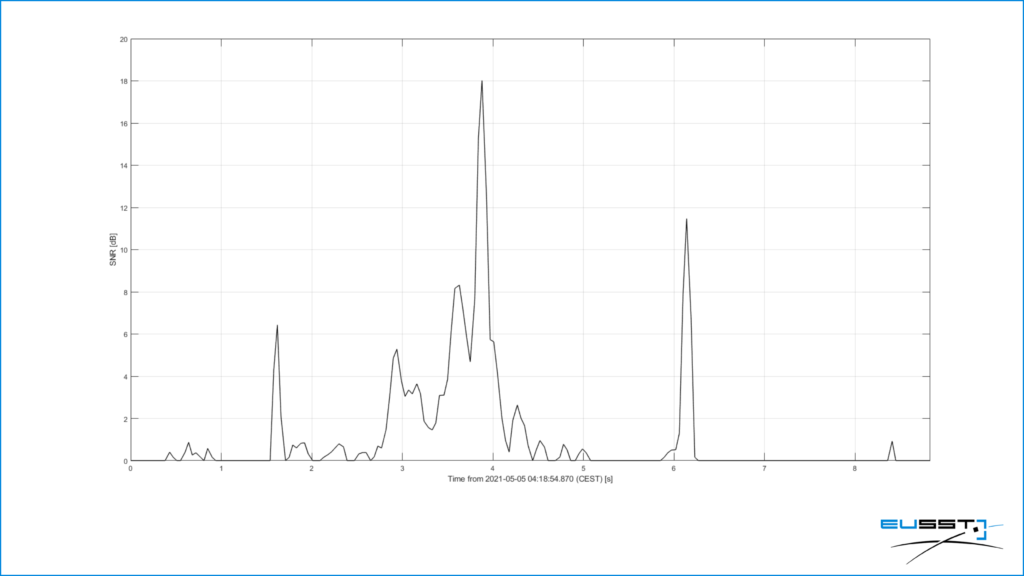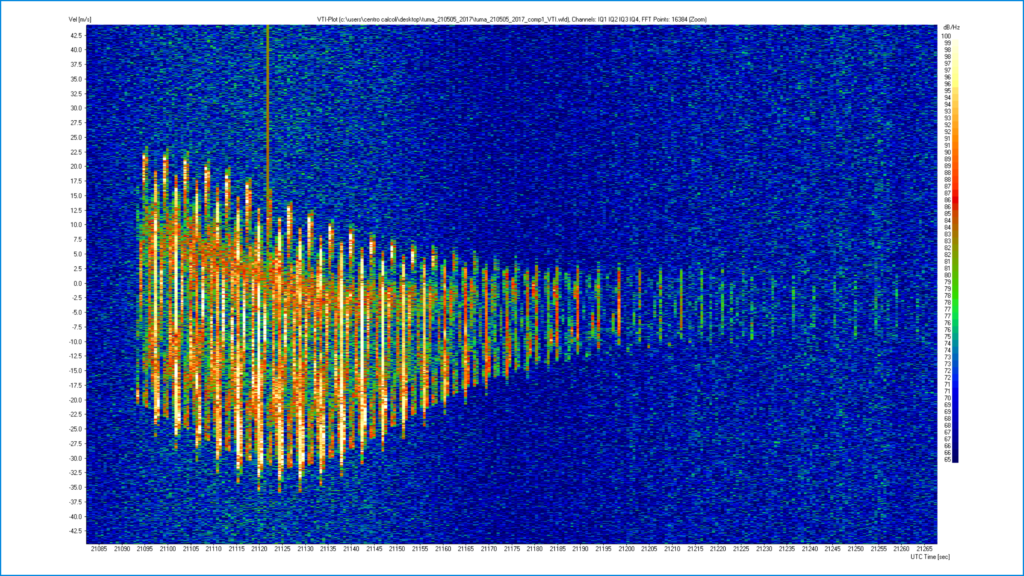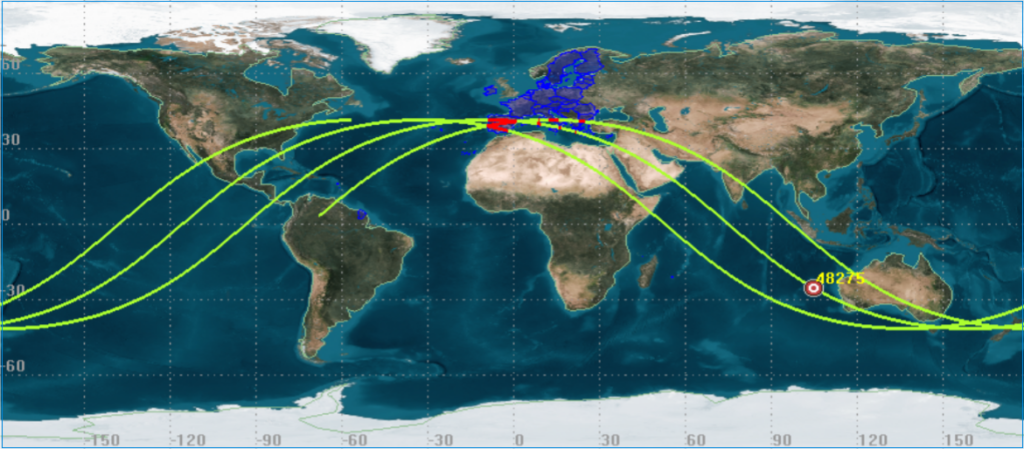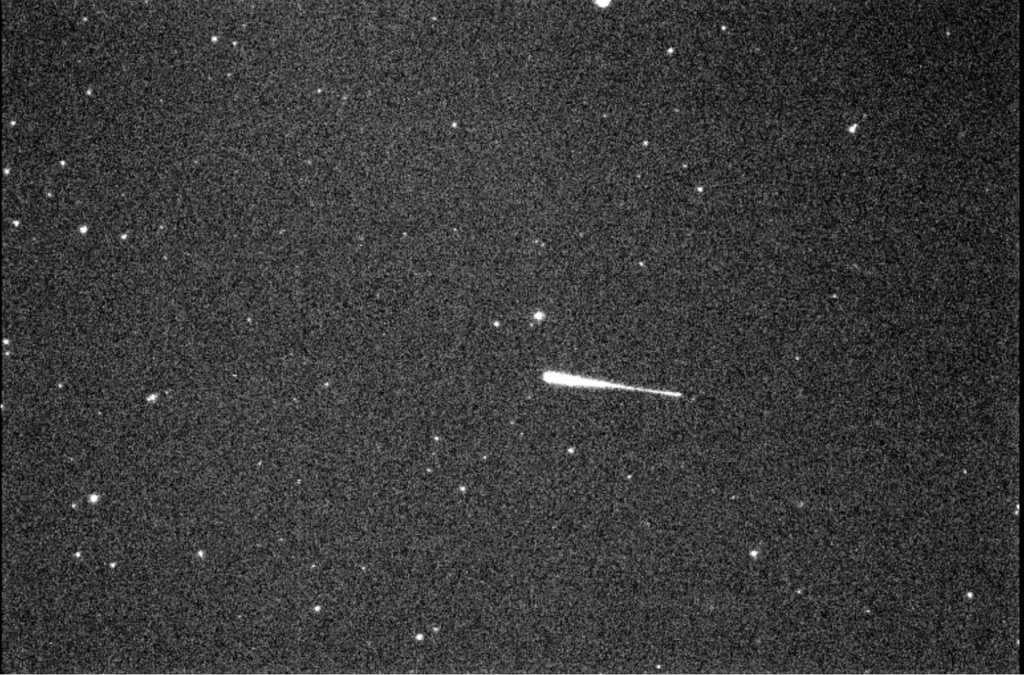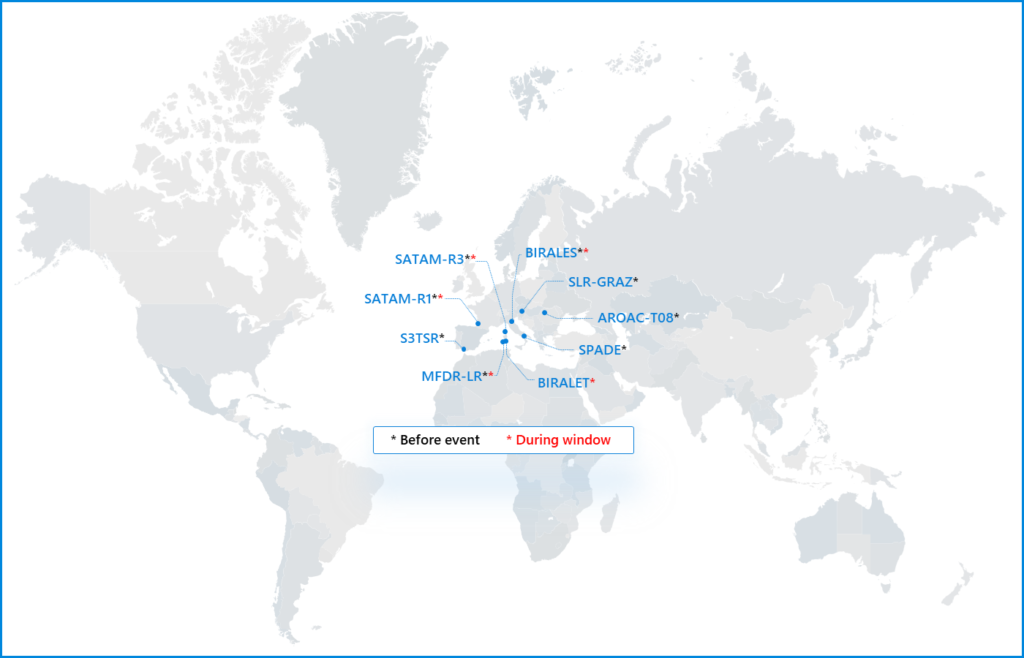EU Space Surveillance and Tracking (EU SST) has monitored the re-entry of large space object CZ-5B R/B (2021-035B), the core stage of the rocket that launched Tianhe – the first module of the Chinese large modular space station – on 29 April 2021. The EU SST network of sensors observed the object closely, and its radars narrowed down its re-entry window to 9 May.
Latest update: 2021-05-19 16:30 UTC+2
Based on the last pass over Europe and external information, EU SST confirmed that object CZ-5B R/B re-entered on 2021-05-09 at 02:32 UTC ±25 min.
During the re-entry window, five EU SST radars attempted detecting the object at subsequent passes over Europe (at around 11pm, 12:30am and 2am UTC) to determine if it had re-entered by having a “no-show”. The object was detected in orbit in all three passes – the last pass being at 2am with detections by two radars -, meaning it had not decayed yet. The following expected pass over Europe was at 3:30am UTC, later than the predicted re-entry time but within the window, though by that time EU SST already confirmed with the help of external sources that the object had decayed from its orbit.
Last prediction before re-entry: 2021-05-08 20:30 UTC+2
On 28 April, before the launch of the space station module into Low Earth Orbit and in preparation for the re-entry of the object, EU SST activated the Taskforce led by SatCen to deal with scenarios associated with critical operations and events of high public interest. This Taskforce coordinated the monitoring and communication during the re-entry campaign.
After launch, on 29 April, EU SST sensors started observing the object closely. Tracking the object from a few days before re-entry is necessary to keep estimating the re-entry window, and to ensure the object’s orbit is kept up to date in order to maintain the ability to track it until the end. Sensors from five EU Member States contributed during the re-entry campaign before the start of the window.
Additionally, by 5 May, several of these sensors had provided information on the rotational state of the object, which helped infer that it was tumbling. This confirmed an uncontrolled re-entry. The below figures show the Signal-to-Noise Ratio (SNR) during a pass by radar BIRALES, with visible peaks every 2.5 seconds, and the Doppler variations of radar MFDR-LR with a 4.5 seconds period, both suggesting a fairly fast rotation.
Object CZ-5B R/B had an estimated mass ranging from 15 to 22 tonnes and a size of about 30 m, which made it one of the largest pieces of debris re-entering in the near past in an uncontrolled manner, and therefore it deserved careful monitoring. EU SST sensors were constantly observing the object and Operations Centres (OCs) continuously performed analyses to produce the best possible estimation for the expected re-entry location and time. In particular, the OC in charge of re-entry (IT) reported with updates on re-entry window evolution and ground track maps twice a day from 5 to 8 May.
Due to its inclination (41.48 degrees), the object could re-enter within the latitude band ±41.48º. In this region, most part of the Earth surface is covered by ocean or uninhabited areas, so the statistical probability of an impact on the ground in populated areas was very low. Based on the sensor measurements, EU SST could further discard certain areas in the latitude band by calculating re-entry window predictions with associated ground-track passes. These predictions however come with uncertainties, and a narrow window estimation was only possible a few hours before the actual re-entry.
The below figure shows the ground track for the last predicted re-entry window. The last window was 2021-05-09 02:32 UTC ±139 minutes, after narrowing down and discarding some of the previously reported ground track passes.
Ground track map of last prediction before start of the window.
Green lines: ground track during the re-entry window. Red lines: part of ground track over EU Member States. Circle: centre of the predicted re-entry window.
Note: possible re-entry locations lie anywhere along the green lines. The re-entry point is considered to be at an altitude of 80 km.
During the whole event, the European Commission, the European Union Aviation Safety Authority and EU civil protection authorities were informed about new developments and the potential impact and risks of the re-entry. Live updates were also provided on social media, generating a strong media impact and high interest among users.
This event shows once again that continuous monitoring of the space environment is needed to ensure the safety and security of European economies, societies and citizens, and close cooperation between all relevant actors in Europe remains essential.
Object CZ-5B R/B observation captured by the Romanian telescope AROAC-T08. Credits: Romanian Space Agency
Map of sensors contributing to the event

